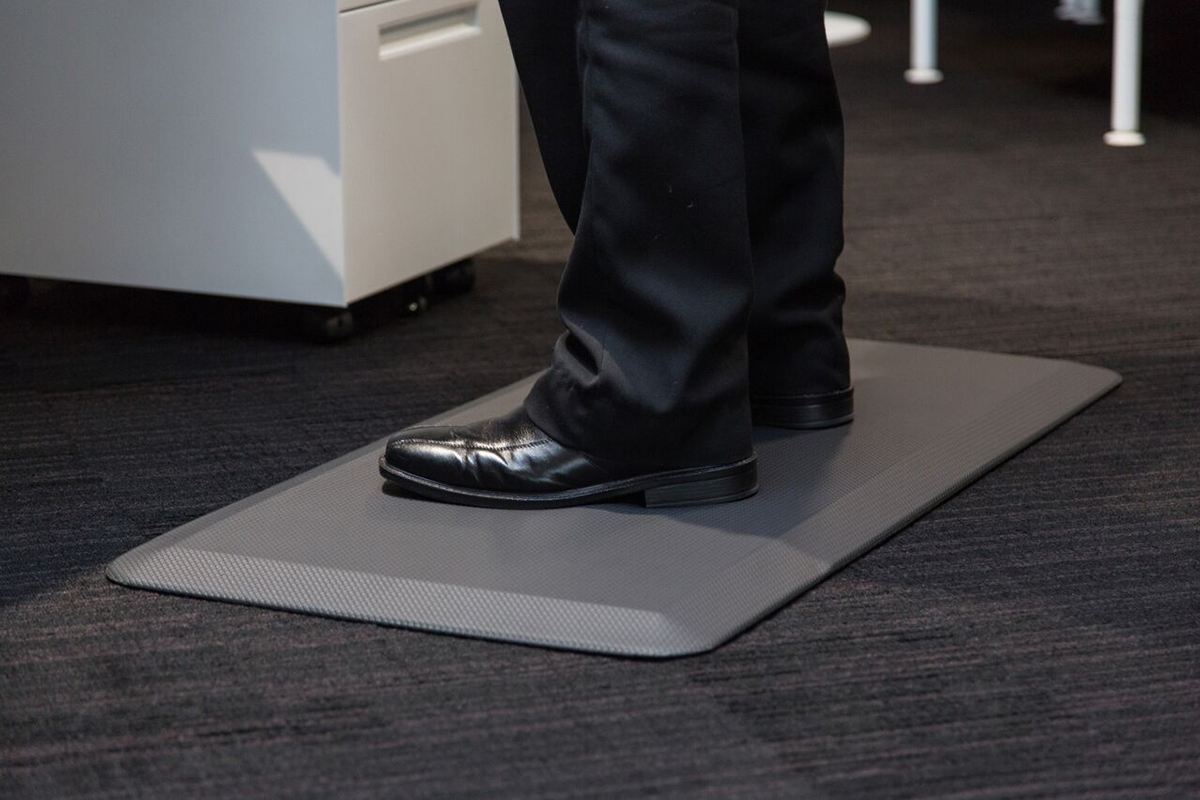 Buying an anti-fatigue mat may seem like a challenging task because of the various types of mats on the market. However, it is an easy task when the buyer knows the tricks and tips to finding High quality rubber mats. First, it’s important to understand the definition for an anti-fatigue mat.
Buying an anti-fatigue mat may seem like a challenging task because of the various types of mats on the market. However, it is an easy task when the buyer knows the tricks and tips to finding High quality rubber mats. First, it’s important to understand the definition for an anti-fatigue mat.
What is an Anti-Fatigue Mat?
An anti-fatigue mat is a type of mat used in a workplace. Sometimes they are used in homes in places like a bathroom, kitchen or utility room. It is designed to reduce fatigue a person may experience standing for long periods of time on a hard surface. An anti-fatigue mat is made of various materials such as rubber, wood, vinyl and carpeting materials.
Type Matting Used on Anti-Fatigue Mats
The major key to an anti-fatigue mat is the rubber. Anti-fatigue mats are made with various types of materials. For example, form is one type of matting that provides proper support and comfort for various types of short stationary tasks.
Foam rubber matting is more during than its form counterpart. It is made of rubber and form to provide comfort in industrial workplaces such as garages, workshops and manufacturing plants. These mats usually have interlocking pieces that provide sufficient and solid support while standing.
Another matting option is the hard rubber anti-fatigue mats. Mats constructed with hard rubber are usually the most durable. They provide excellent support will standing on extremely hard surfaces found in places like machine shops and manufacturing industries. The mats have holes in them to prevent liquids, debris and particles from resting on them.
Five Qualities of an Anti-Fatigue Mat
The final consideration when determining the best type of anti-fatigue mat is the five qualities. Price is the first quality. It should be easily affordable but not too cheap. Remember the manufacturer should use high quality materials when making the mat so that it doesn’t tear.
Another factor is the condition of the mat. The quality of an anti-fatigue mat is known as soon as the person stands on it, then quickly steps off of it. The mat should quickly return to its original shape. It may not be in good condition.
Pressure is the fourth quality. The anti-fatigue must provide the perfect balance needed to reduce pressure while standing. This perfect balance depends on a worker’s body type. Thus, the mat should never be too soft or too firm. It should also provide the perfect circulation or comfort. For example, if the anti-fatigue mat is too soft, a worker won’t be able to move with ease.
The mat should not be an imitation anti-fatigue mat. An imitation anti-fatigue mat has the traits of a mat that reduces pressure while standing. Although they may have the same traits, they don’t fully reduce the pressure causing by standing for long periods of time. The last quality of an anti-fatigue mat is the warranty. Check for guarantees, warranties and limitations on the mat. This will allow an employer to return the mat if is defective.




